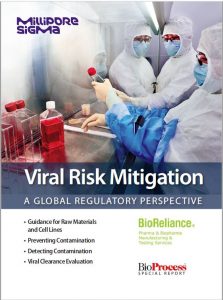 The production of biologics will always have the risk of viral contamination. Manufacturers have developed a multitiered approach — tailored to individual processes — to prevent adventitious viruses from entering production processes, detect contamination in raw materials and process intermediates, and remove viruses in downstream purification. This article provides an overview of the global regulatory framework to ensure the viral safety of biologics.
The production of biologics will always have the risk of viral contamination. Manufacturers have developed a multitiered approach — tailored to individual processes — to prevent adventitious viruses from entering production processes, detect contamination in raw materials and process intermediates, and remove viruses in downstream purification. This article provides an overview of the global regulatory framework to ensure the viral safety of biologics.
Past Contamination Events
Past contamination events have resulted in corrective and preventative actions to reduce the risk of viral contamination in biologics. A number of viral contamination events have been reported in different production processes.
Many of those events involved Chinese hamster ovary (CHO) cells, a commonly used cell line for monoclonal antibody (MAb) production, and in some cases, bovine serum was identified as the likely source of contamination. The most frequently reported viral contamination of CHO cells has been with minute virus of mice (MVM), and the most likely sources were media components such as glucose. Porcine trypsin was the likely source of porcine circovirus contamination of rotavirus vaccines.
Unfortunately, not all adventitious virus contaminations are easily detected. For instance, most insect viruses silently infect insect cells. Nodavirus or rhabdovirus infections of insect cells are common, and although scientists generally believe that such viruses are not of concern to humans, nodavirus can produce morbidity after injection into suckling mice.
Just fill out this form to download the full special report.

no avaliable pdf
Hi Tian,
If you can’t see the form to download the article, you may need to turn off any ad-blocking software your browser has enabled.